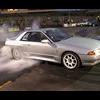Brake Upgrade dribble
Announcements
-
Similar Content
-
Latest Posts
-
Sounds insane! 🤤🤤🤤 Do you have any vids of it driving? A flyby would be nice!
-
By soviet_merlin · Posted
Hmpf, won't be able to make it after all unfortunately. Next time. -
Good to see your rotors appear as rusty as mine 🤪
-
Took it for a drive to do some logs, I’m pretty sure my voltage issues and electrical noise issues are gone, I’ve sent a log to Adam and am waiting to hear back with confirmation att.K23U9eHyiEJxixH6y1__GQfuqK0EgIoDgQFTs9G8x_w.mp4 idle video from that day just because
-








Recommended Posts
Create an account or sign in to comment
You need to be a member in order to leave a comment
Create an account
Sign up for a new account in our community. It's easy!
Register a new accountSign in
Already have an account? Sign in here.
Sign In Now